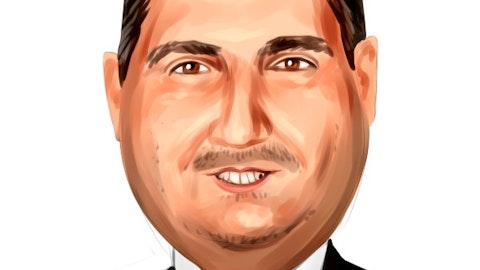Mark Carhart was the guest of Columbia University’s Quantitative Finance program a few months ago. Carhart gave an hour long speech about quantitative finance and leaked some juicy details about Goldman Sachs, which we discussed some of it in a separate article. Mark Carhart was the poster child of quantitative finance, managing a $200 Billion portfolio at Goldman Sachs using quantitative investment strategies.
When calculating a portfolio manager’s alpha, Insider Monkey uses the four factor model developed by Mark Carhart as a student of Eugene Fama. It’s a beautiful model telling you not to give credit to portfolio managers who achieve their returns by consistently being long the market or consistently betting on small value stocks with price momentum. We showed that Warren Buffett didn’t generate any alpha between 2000 and 2009 by using Carhart’s methodology.

The reason was Warren Buffett consistently invests in value stocks. One can generate similar outcomes by simply investing in a portfolio of value stocks. A fund manager following value stocks can only generate alpha if he has some stock picking skills that can generate higher returns than a generic value strategy.
We noticed that it is not easy for several investors to understand the logic behind this methodology. So we always ask them this question: would you want to give a fund manager 2% of your capital and 20% of your returns every year because he is investing in value stocks with no particular stock picking ability? If your answer is yes, we urge you to contact us immediately because we can do this for you too. The truth is you can do it too. You don’t even need to do it, there are several low cost mutual funds that do this for an annual fee of 50 basis points.
This was also one of the points Mark Carhart made in his speech. Mark Carhart said an average long/short hedge fund has usually a 50% net market exposure. This means hedge fund investors are paying 1% of their assets and 10% of their profits (half of the usual amount because the fund has only 50 net exposure) for something Fidelity and Vanguard provide for 10 basis points per year. Investors shouldn’t pay astronomical hedge fund fees for simple beta. The second category is exotic beta. This is investing in small caps, value stocks, or momentum stocks. Fund managers can beat the market on the average by investing in these categories. You should expect your fund manager to invest in these categories but shouldn’t pay him the astronomical hedge fund fees for this.
Carhart says investors should analyze how their managers generate returns — alpha or beta. They should not be paying 2 and 20 for beta or exotic beta. Too many investors were attracted by high returns during the last bull market. Unfortunately most of those returns were coming from beta exposure. Investors should use quantitative methodologies to identify true alpha. Hedge fund managers don’t know or won’t tell you what their alpha is. They will try to convince investors that all the upside is true alpha. Unfortunately average hedge fund lost 15-20% in 2008 which tells us that they had enormous beta exposure. They still do.
If you don’t know how to calculate hedge funds’ alpha by using Carhart’s four-factor model, Insider Monkey can do it for you for free. All you need to do is to send us the monthly returns of the hedge fund you are considering and we will do the rest for you.





